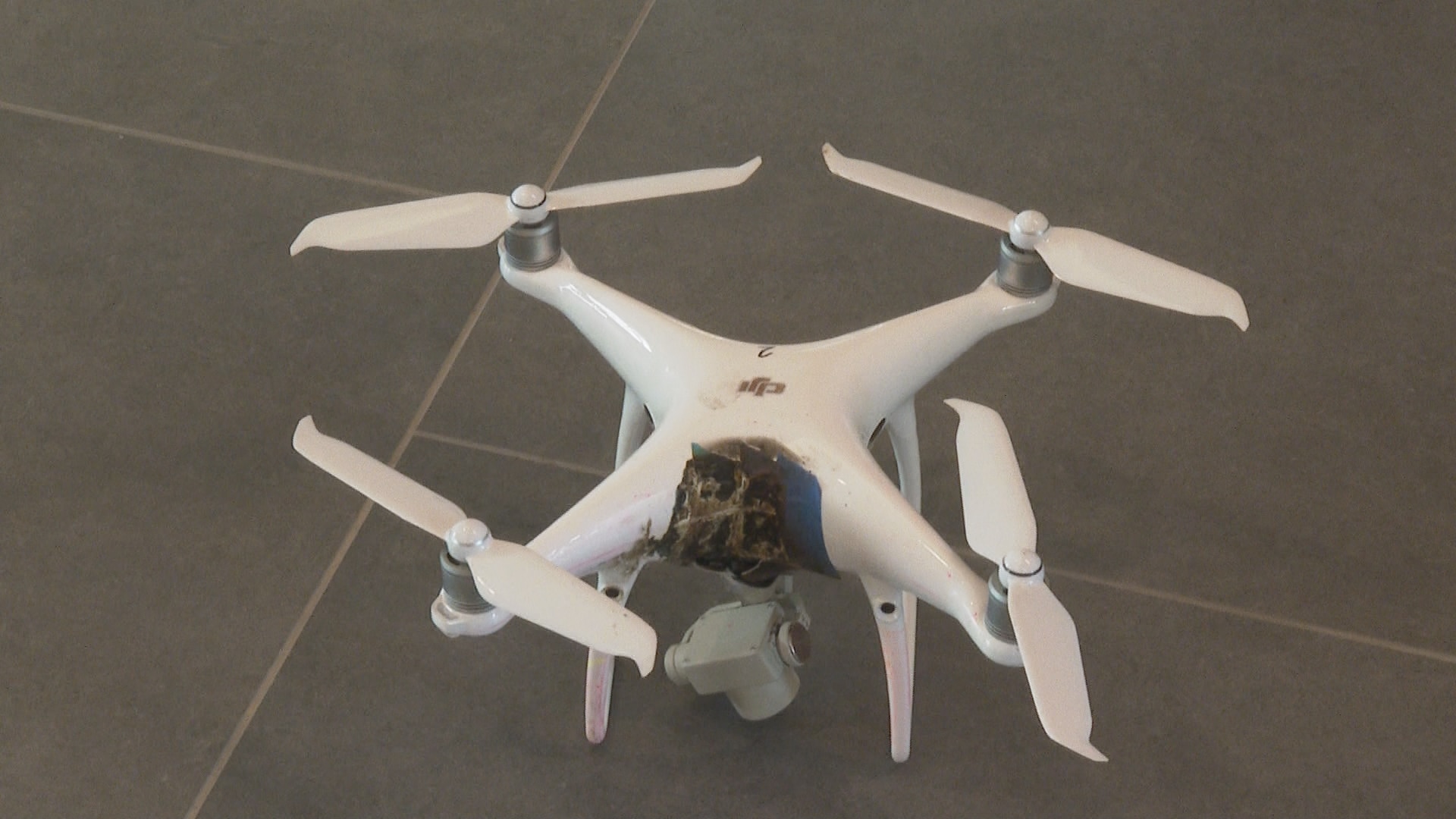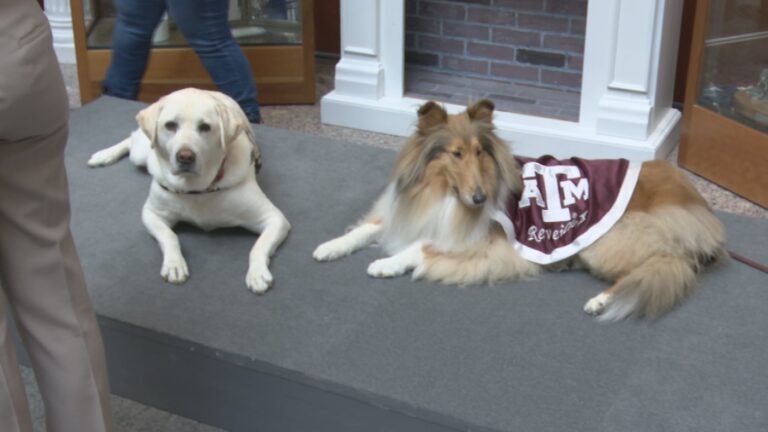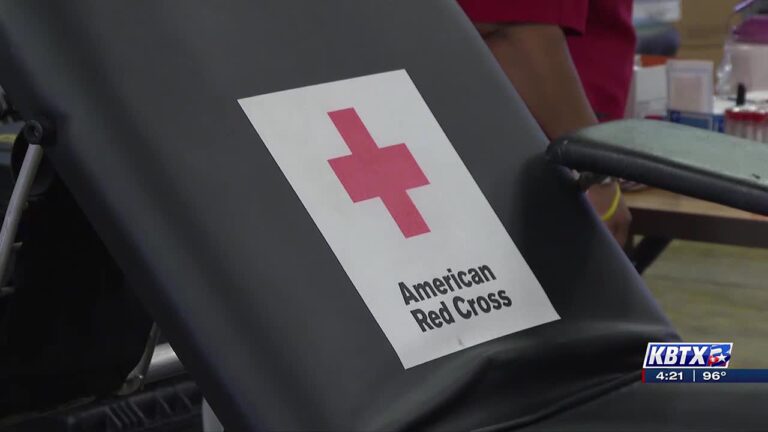Texas A&M-RELLIS campus hosts state’s first historic high-energy laser test to combat drones
BRYAN-COLLEGE STATION, Texas (KBTX) -Raytheon and Texas A&M have achieved a significant milestone for the state of Texas by conducting its first open-air test of a high-energy laser system.
Raytheon, a subsidiary of RTX, recently conducted an open-air test of a high-energy laser (HEL) weapon at the George H.W. Bush Combat Development Complex (BCDC) on the Texas A&M-RELLIS campus. The test took place on September 21 and 22 and showcased Raytheon’s HEL technology designed to combat drone threats effectively. This test marked the first-ever use of a laser weapon in the state of Texas, demonstrating advancements in defense technology.
George H.W. Bush Combat Development Complex (BCDC) on the Texas A&M-RELLIS campus. (Donnie Tuggle/Bryan-College Station)
Drone attacks are a growing concern in various settings due to their impact and challenges in detection and defense. Michael Hofle, senior director of high energy lasers at Raytheon, emphasized the importance of developing solutions in Texas.
“We see drone attacks having an out-sized impact in combat zones and even civilian settings, and they are extremely difficult to detect and defeat,” said Hofle That’s why we’re making Texas a hub for solving these challenges, side-by-side with the Bush Combat Development Complex. Our combat-ready laser weapons are a cheat code against drones. So, having the ability to test our systems in our own backyard is a game changer for getting this technology into the hands of uniformed personnel quickly and affordably.”
The 15-kilowatt laser weapon marks the ninth production by Raytheon in McKinney, Texas. Prior tests and demonstrations took place in different states, utilizing existing firing ranges as deemed suitable.
Retired Colonel Brian McHugh who oversees range operations for the Bush Combat Development Complexes Innovation Proving Ground and served as the test director expressed the excitement of witnessing such powerful technology in action, especially since he has children who are now serving in the military.
“How powerful is that to be in Texas and shoot a large laser right, it’s almost like being a kid, you’re seeing a laser go down. You didn’t get to see it but you’re seeing this, they hit a trigger and then all of a sudden things start burning down range,” said McHugh.
Retired Colonel Brian McHugh (Donnie Tuggle/Bryan-College Station)
John Sharp, Chancellor of The Texas A&M University System, expressed satisfaction with the collaboration.
“We are proud to collaborate with Raytheon on the latest technologies for national security,” said John Sharp, chancellor of The Texas A&M University System. “This is another example of the world-changing impact that Texas A&M-RELLIS will have for generations to come.”
A team of experts transported the laser weapon to the RELLIS campus for adjustments and conducted calibration and testing processes, including tracking, targeting, and destroying multiple drone targets. The system is scheduled to be sent to the United Kingdom in October for integration and delivery to the U.K. Ministry of Defense.
BCDC director Tim Green emphasized the significance of the partnership.
“When we met with Army Futures Command four years ago, they identified a need for our assistance in advancing their directed energy capabilities,” said BCDC director Tim Green. “Texas A&M System leadership then worked with the 2019 Texas legislature and the Board of Regents to obtain a combined $130 million toward the development of facilities here on Texas A&M-RELLIS, designed to accelerate the development of key national security technologies, including directed energy, at what is now known as BCDC. We are proud to bring together industry and academic experts, working closely together to provide a capability Texas needs to be a leader in delivering directed energy weapons to meet urgent military needs.”
Dr. James Creel, a BCDC-directed energy senior research engineer and Isabelle Smith BCDC research engineer. (Donnie Tuggle/Bryan-College Station)
Dr. James Creel, a BCDC-directed energy senior research engineer, served as lead for the project.
“When Raytheon asked about our ability to perform live-fire tests, it did catch us off guard. But when we saw how much of a game changer this could be for the State of Texas and for our troops, we quickly established a team of experts from across the Texas A&M University System, and other state agencies like the Texas Department of State Health Services, (DSHS) to quickly develop the capability where that kind of test could be conducted safely here on the Texas A&M-RELLIS campus,” said Creel. “We’re proud of the way this team came together to provide this new capability, and we’re excited to work with Raytheon to help them develop future capabilities.”
Drone disabled by lasers at the BCDC. (Donnie Tuggle/Bryan-College Station)
Creel says besides the laser firing itself he’s most proud of the collaboration that has taken place.
“Many times when you try to bring many organizations together to complete a common goal, you end up not getting the job done as effectively and efficiently as you would like,” said Creel.
Isabelle Smith, a BCDC research engineer, believes this endeavor offers an opportunity to bridge existing research with industry needs while showing the world the endless capabilities that the BCDC and RELLIS Campus have to offer.
“I think there’s an opportunity here to integrate research that is already being done with what industry needs,” said Smith.
The BCDC says that are in the process of establishing a more formal relationship with Raytheon over the coming months.







